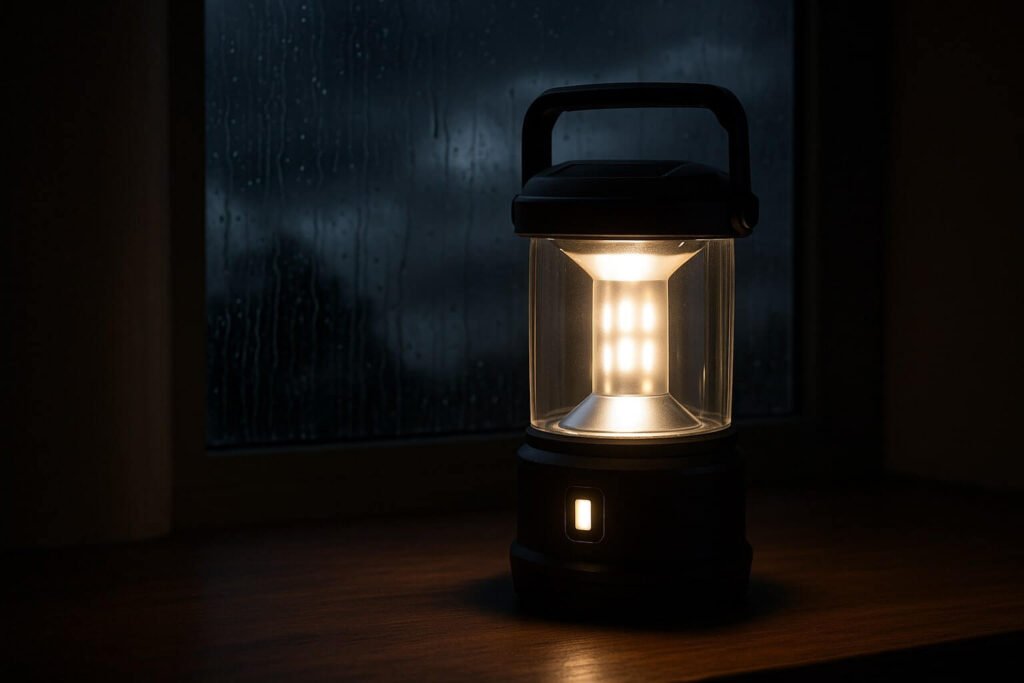When the power goes out and the rain lashes sideways, there’s nothing more essential than a reliable light source. A hurricane emergency lantern isn’t just a backup plan—it’s your front line of defense for visibility, safety, and peace of mind when everything else goes dark. Whether you’re bracing for a Category 1 or facing the full force of a monster storm, the right lantern makes all the difference between stumbling around in shadows and calmly navigating your space.
Many households still rely on old-school candles or kerosene lamps during outages, but modern emergency lighting has evolved in a big way. Today’s hurricane emergency lanterns are powerful, rechargeable, and smart enough to charge your phone while running all night. With the right model, you’ll not only avoid open flames and carbon monoxide risks, but you’ll also gain flexible lighting that works indoors, outside, or on the go.
So what makes a lantern hurricane-ready? Let’s break it down.
Brightness, Battery Life, and Safety—The Core Trio
First things first: brightness is nothing without runtime. A good hurricane emergency lantern gives you at least 150 lumens for general tasks and over 300 for room-wide lighting. Some top-tier models like the Goal Zero Lighthouse 600 offer adjustable beams, letting you dial up the light when prepping meals, or dim it down when the kids are winding down.
Battery life is critical too. During a multi-day outage, you don’t want to swap AA batteries every evening. The best lanterns run for 100+ hours on low or 10–20 hours on high. Look for rechargeable lithium-ion models that hold charge longer and recharge faster. Having multiple power options is also key: USB, solar, or hand crank. You might not have access to a wall outlet, so versatility becomes survival.
Candles might seem quaint, but the truth is they’re not safe. Gas leaks, flammable materials, and windy drafts make open flame a liability in hurricane zones. That’s why FEMA and NOAA both recommend LED lanterns over anything else. These lights stay cool, resist shattering, and operate cleanly even when moisture is in the air. No soot, no toxic gases, no stress.
Our Top Picks for Hurricane Emergency Lanterns in 2025
Finding the perfect lantern isn’t about picking the most expensive—it’s about knowing what suits your needs. For solo use in a bedroom, a compact collapsible light like the Vont 4-Pack does the trick. If you’re lighting an entire family room or backyard setup, you’ll want something like the Coleman OneSource 1000 Lumen or the BioLite BaseLantern XL.
The LuminAID PackLite Titan offers an amazing balance: solar power, USB recharge, inflatable waterproof shell, and a battery bank that recharges your phone. It collapses flat, so it fits in your emergency drawer without taking up space. Plus, it floats, which is more useful than it sounds in flood-prone areas.
For those looking to crank power the old-fashioned way, the Goal Zero Lighthouse 600 is a dream. It has a hand crank that gives you 10 minutes of light for every one minute of effort. Perfect for those moments when all your other devices are dead and the grid’s still down.
Want smart features? The BioLite BaseLantern XL has Bluetooth connectivity, letting you control brightness or set timers from your phone. It’s not a gimmick—it’s practical when you’re conserving every minute of light and energy.
Little Details That Matter in a Hurricane
When the storm hits, you don’t have time to fumble. That’s why you should prepare ahead. Mark out spots in your home where each lantern will live. Tape a glow-in-the-dark sticker nearby so it’s visible even when you can’t see your hand in front of you. Train your kids or roommates on how to use each light. Know which lantern has the phone charger, which one is water-resistant, and which one lasts longest.
Red light modes help keep your night vision intact. Magnetic bases stick to your fridge or car hood. Hanging hooks let you suspend light from above for full-room coverage. These tiny features feel like luxuries at first, but they’re lifesavers in real use.
Also consider power redundancy. A hurricane emergency lantern with a solar panel works wonders, but pairing it with a separate foldable 20-watt solar charger or a beefy power bank gives you added insurance. Your light, your radio, and your phone all become connected in this delicate dance of power management.
Don’t forget: lithium batteries slowly drain over time. Top up your lanterns once a month during hurricane season, especially if they sit unused. Label them with the last charge date using painter’s tape, and keep all charging cords together in a waterproof zip bag.
Why Every Home Needs More Than One Lantern
One lantern isn’t enough. Each bedroom needs one. The kitchen needs one. The hallway and bathroom too. The idea is to reduce movement during dark hours and avoid accidents. Spreading your light sources reduces stress and keeps everyone calm. If you’ve got four people in your home, you should have at least four lanterns—plus one in shared areas.
And while it might sound silly, backup lights ease the mental strain of long outages. They let you play games, read books, cook safely, and maintain some level of normalcy. In a hurricane’s aftermath, that comfort matters. Light is hope, order, and reassurance all rolled into one.
Whether you’re a prepper with a basement full of gear or just starting your emergency kit, a hurricane emergency lantern should be near the top of your list. Choose one with the right lumen count, enough runtime, safe recharging options, and durability to survive more than one season. Because storms don’t wait, and your light shouldn’t flicker when you need it most.


